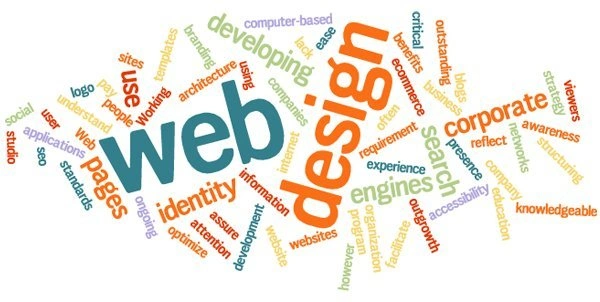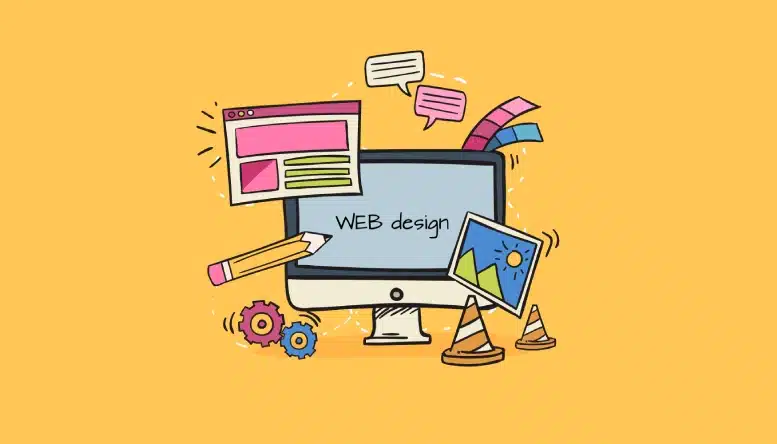Aligned Position Web Design: Expert Web Design Strategies for Achieving Business Goals Online
The Finest Types of Website Design to Boost Customer Experience and Involvement
In the ever-evolving landscape of electronic communication, the performance of Web design substantially influences customer experience and involvement. Numerous style techniques, such as minimal, receptive, and interactive designs, each offer one-of-a-kind benefits that can cater to diverse user demands.
Minimal Web Layout
As digital landscapes become increasingly cluttered, minimalist Web design has become a powerful approach to improving individual experience. This design approach prioritizes simplicity, concentrating on crucial components while removing unnecessary distractions. By utilizing enough white room, simple navigation, and a restricted color scheme, minimal style fosters clearness and directs individual attention to vital content.
The core principle of minimalist website design is to produce a seamless communication for individuals. By lowering cognitive lots, individuals can swiftly realize info without feeling overwhelmed. This direct approach not just enhances functionality yet likewise encourages interaction, as site visitors are more probable to explore a website that is visually enticing and simple to navigate.
Additionally, minimalist design commonly stresses typography and images, utilizing these aspects tactically to share messages successfully. In significance, minimalist Web style is not simply a fad; it is a thoughtful methodology that recognizes the relevance of user-centered design.
Responsive Web Design
In today's varied electronic atmosphere, receptive Web style has ended up being necessary for developing a smooth customer experience across a plethora of tools. As individuals gain access to internet sites on smart devices, laptops, tablets, and desktops, the capability of a web site to adapt its design and content to different display dimensions and resolutions is critical.
Receptive Web design utilizes flexible grids, photos, and CSS media inquiries to make sure that Web content is presented optimally, despite the tool made use of. This approach not just enhances the visual appeal of an internet site yet likewise considerably enhances functionality. Users are more probable to engage with a website that supplies a regular experience, as it gets rid of the stress of needing to zoom in or scroll exceedingly.
Additionally, internet search engine, including Google, prioritize mobile-friendly internet sites in search rankings. By taking on receptive layout, businesses can improve their visibility and reach a broader audience. This method also simplifies web site maintenance, as a solitary version of the website can deal with all tools, decreasing the demand for multiple variations. In summary, receptive website design is a fundamental method that enhances individual experience, involvement, and general satisfaction.
Interactive Website Design
Responsive website design lays the foundation for enhancing customer experience, but interactive Web layout takes this an action even more by involving customers in a more dynamic way - Aligned Position Web Design. By including aspects such as computer animations, clickable models, and real-time feedback, interactive Web style captivates customers, drawing them into a richer browsing experience
This method not only cultivates interaction but also motivates individuals to check out content actively instead than passively consuming it. Techniques such as gamification, where individuals make benefits for completing tasks, can dramatically boost the moment invested on a website and boost total contentment. Furthermore, interactive features can streamline intricate details, making it extra digestible and satisfying.

Including interactive design aspects can additionally result in higher conversion prices, as customers are extra likely to engage with a website that proactively involves them. Aligned Position Web Design. Eventually, interactive Web layout transforms individual experiences right into remarkable trips, making certain that visitors return time after time
Flat Style
Defined by its minimalistic method, flat style highlights simplicity and performance, removing unneeded components and concentrating on vital functions. This style approach focuses on functionality, making sure that customers can browse user interfaces easily and effectiveness. By utilizing a tidy aesthetic, level style gets rid of the clutter frequently found in much more ornate styles, therefore boosting customer concentrate on material and functionality.
The characteristic of level layout lies in its use bold shades, straightforward typography, and geometric forms. These aspects add to an aesthetically enticing interface that is both friendly and contemporary. In addition, level style fosters a feeling of clearness, allowing users to determine necessary actions and details without diversion.
In addition, flat style is basics particularly reliable in responsive Web design, as its simpleness converts well across different tools and display sizes. By focusing on essential functions, level layout not only meets individual demands however likewise urges smooth communication, making it an essential component of effective Web style approaches.
Flexible Website Design
Adaptive Web style customizes the individual experience by producing multiple fixed formats customized to various display sizes and devices. Unlike receptive style, which fluidly readjusts a single layout, flexible design employs distinct layouts for certain breakpoints, making certain ideal presentation on different platforms. This method allows designers to concentrate on the special features of each tool, boosting functionality by delivering precisely click this link what users need based upon their context.
One of the key advantages of flexible website design is its capability to optimize load times and efficiency. By offering customized material and images that fit the customer's tool, web sites can lessen data usage and boost loading rates. This is especially useful for customers with slower links or restricted data plans.

In addition, adaptive layout helps with an extra controlled and constant branding experience. Considering that developers create several formats, they can ensure that the visual aspects line up with the brand name's identification throughout various platforms - Aligned Position Web Design. This leads to a natural customer experience, boosting involvement and advertising customer retention
Conclusion
In final thought, the assimilation of minimalist, responsive, and interactive website design concepts considerably improves individual experience and interaction. Minimalist design promotes clearness and emphasis, while receptive layout ensures adaptability across different Learn More gadgets, promoting availability. Interactive style astounds customers via vibrant components, urging expedition and customization. Jointly, these layout comes close to add to the production of straightforward settings that not just boost contentment yet additionally drive greater conversion rates, highlighting their vital value in contemporary Web design strategies.

Minimal layout cultivates clarity and focus, while responsive design ensures flexibility throughout various devices, promoting accessibility. Collectively, these design approaches add to the production of straightforward settings that not just enhance fulfillment however likewise drive higher conversion rates, emphasizing their essential relevance in modern Web style methods.